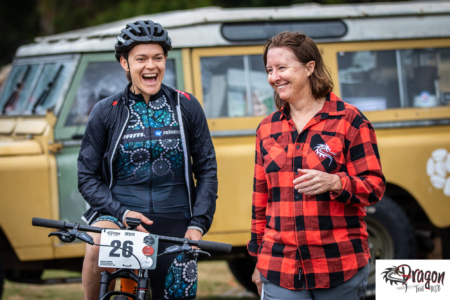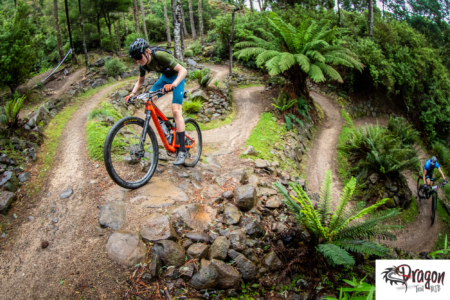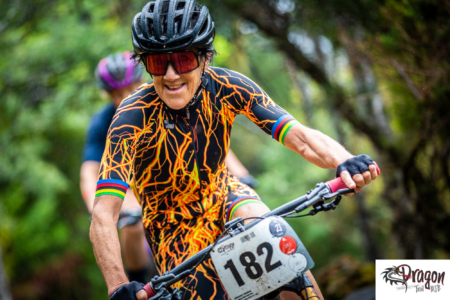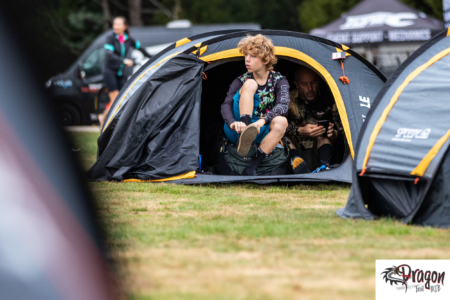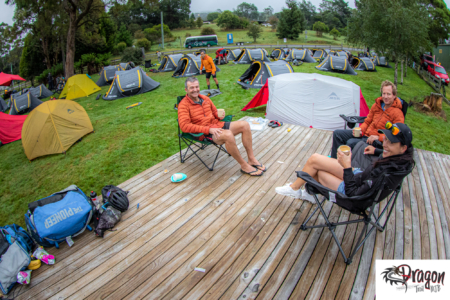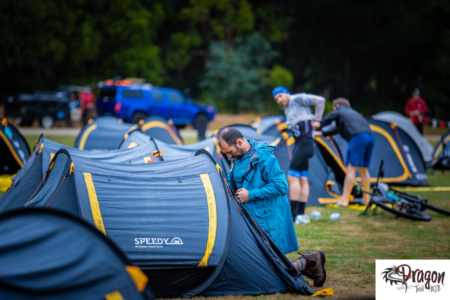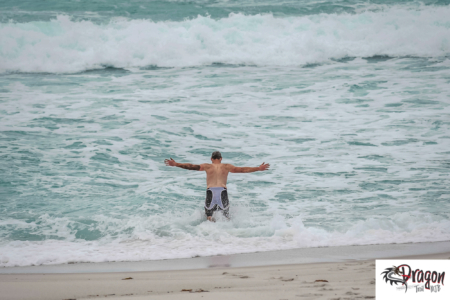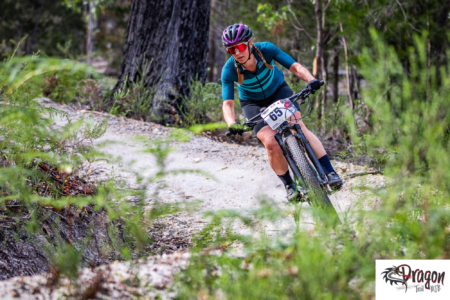Stage racing in Derby and St Helens, how good! The Dragon Trail is back for its third year. Scheduled for March 16-18, the 2023 event sees some logistical changes and more singletrack than ever.
We caught up with Louise Foulkes from Geocentric Outdoor to get the lowdown on what you can expect from this year’s race.
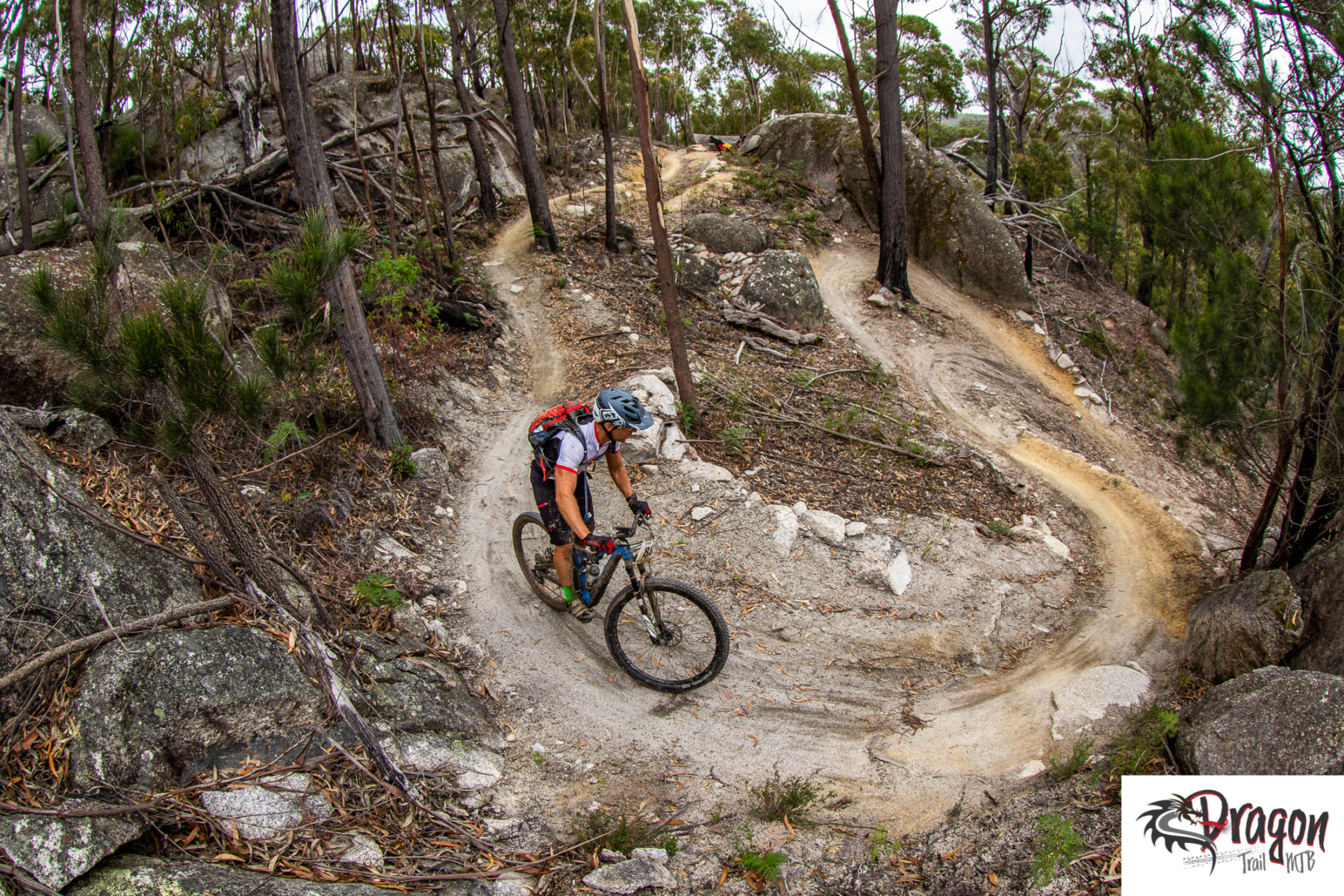
New camp layout and a run-down Atlas
The most significant change for this year’s race is that riders will stay in Derby on day one. This not only means the course will stay mainly within the confines of the trail network, but it also eliminates the need for the campsite in Weldborough.
“Originally, you would start in Branxholm, ride to Weldborough on day one, and move to Weldborough. Then we’d ride to St Helens on day two and move to St Helens. Now we can actually spend more time in Derby, keep the camp in Branxholm for two nights, and ride a circular loop around Derby, and take in some of the iconic trails in that area. It also eases up on the logistics a little bit,” says Foulkes.
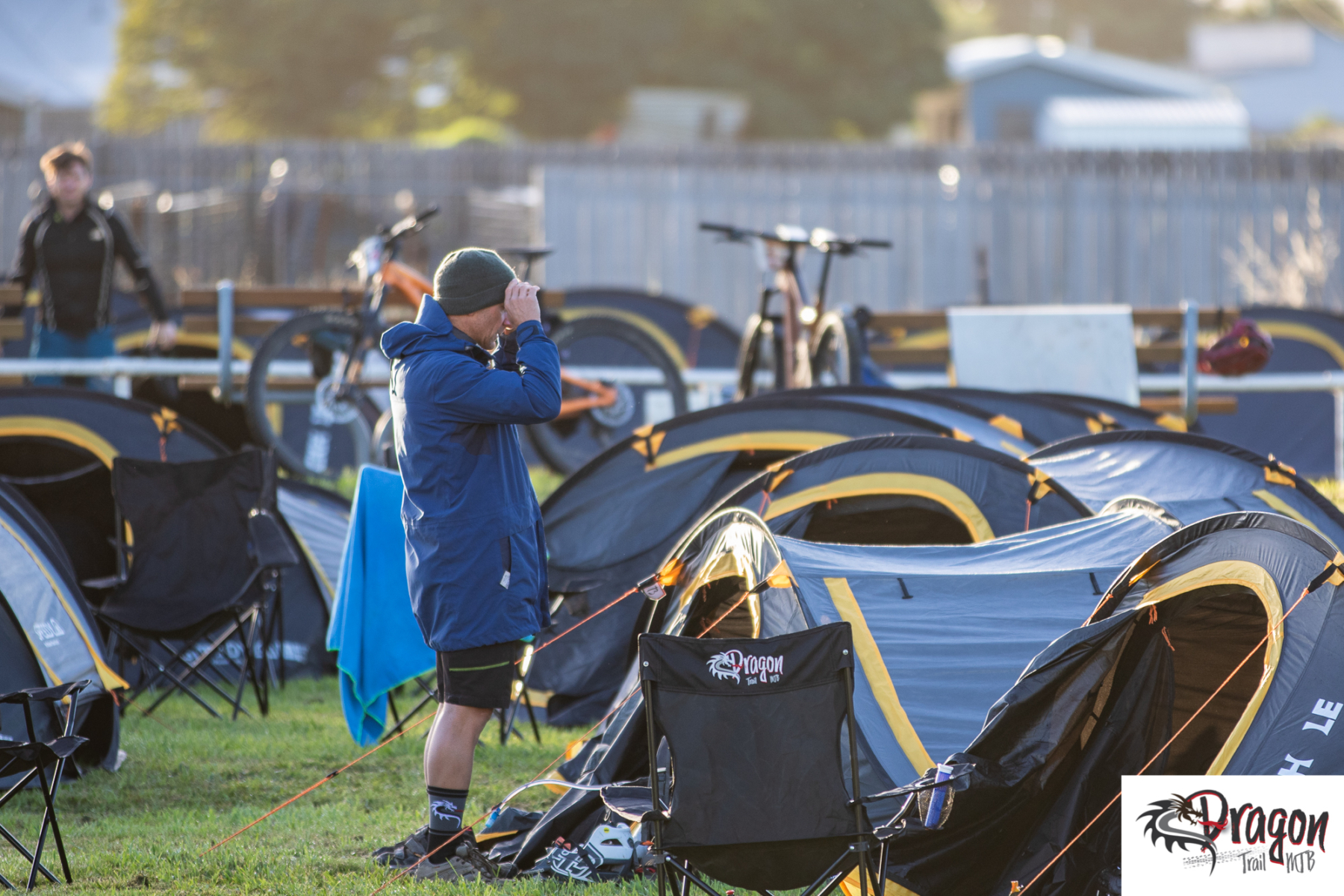
When Foulkes says iconic trails around Derby, she’s not kidding. The course map for stage one hasn’t been published yet, but she gave us an overview of what folks can expect.
“We’re going to do the big climbing route up Axehead and Long Shadows up to Black Stump. Then they’ll do Upper Flickity and Great Race. Then they’re going to head to some of the Dam Busters route and up some fire trails out the back to visit the Mount Paris Dam,” she says.
“And then the big thing is they’re going to come back down Atlas,” Foulkes says.
That’s right, stage one of the Dragon Trail this year will include Atlas, which has just had a touch-up and will be absolutely mint!
What about stage two and three?
The remaining stages are primarily unchanged from previous years. Stage two starts in Weldborough, heads up the original rough and tumble climb to the Blue Tier and back down The Bay of Fires Trail. This includes the new 5km of singletrack that cuts out a significant portion of the fire road liaison, which follows the initial 14km descent. We rode this new section back in November, and it’s primo!
The final day heads to the Flagstaff trail network in St Helens, taking in trails like Rock Lobster, Wedged In, Garnup and the Dreaming Pools wilderness trail.
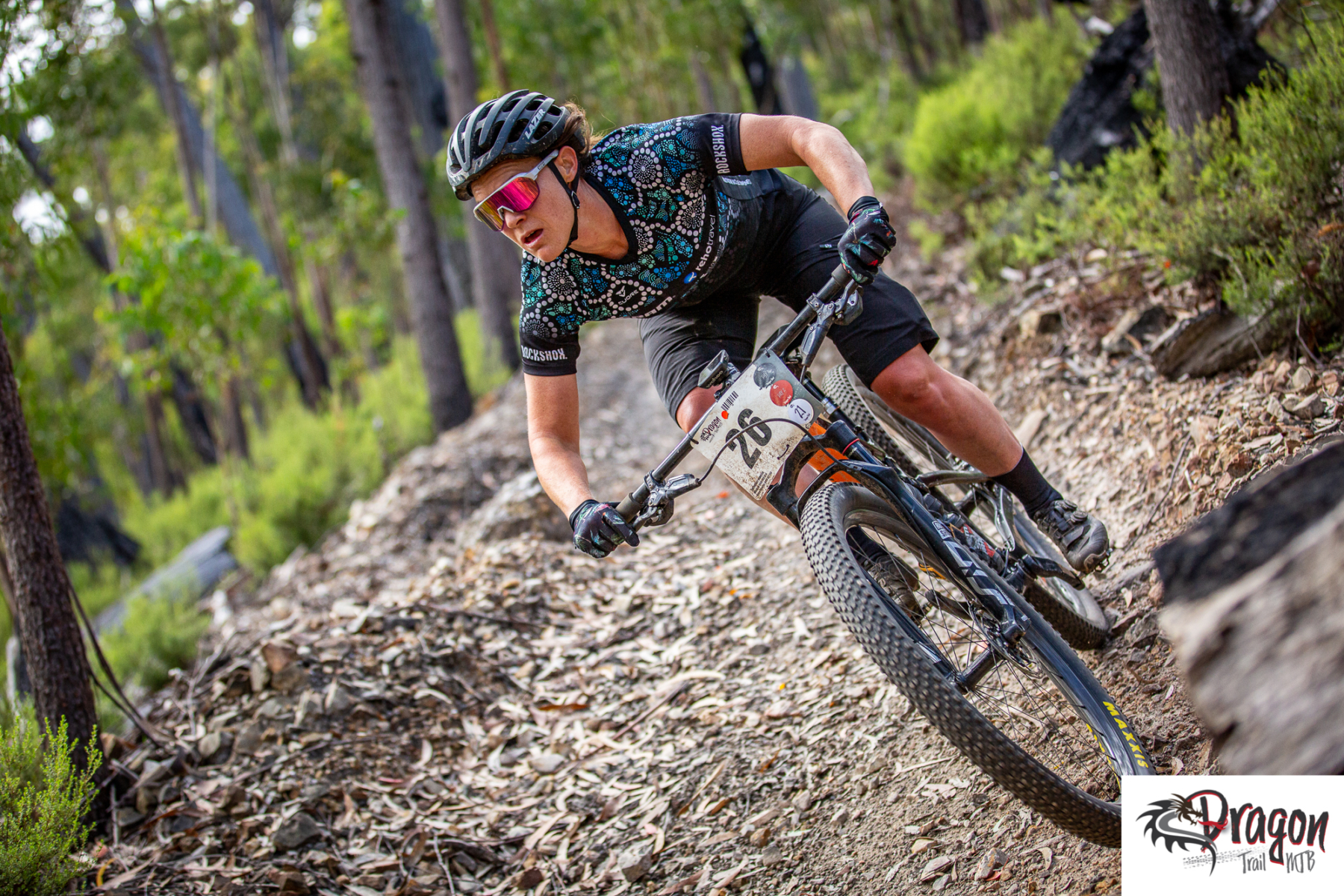
Accommodation
With the change from three camps to two, it makes the logistics for both riders and organisers significantly easier. The race team will even set up your tent for you. That said, roughing it is not everyone’s jam, and Foulkes says about half the riders opt for fixed accommodation.
“The point-to-point aspect still creates a logistical challenge, so we’ve put additional transfers at the end of the stage, or if you don’t have a transfer, you can get a bus to the start of stage two,” says Foulkes.
So if you don’t want to touch a sleeping bag and air mattress with a ten-foot tent pole, it would be possible to stay in private accommodation in Derby or Branxholm, and another in St Helens and grab a bus to the start line. Or if you have a car, the race team will shuttle you from the finish area back to where you have parked.
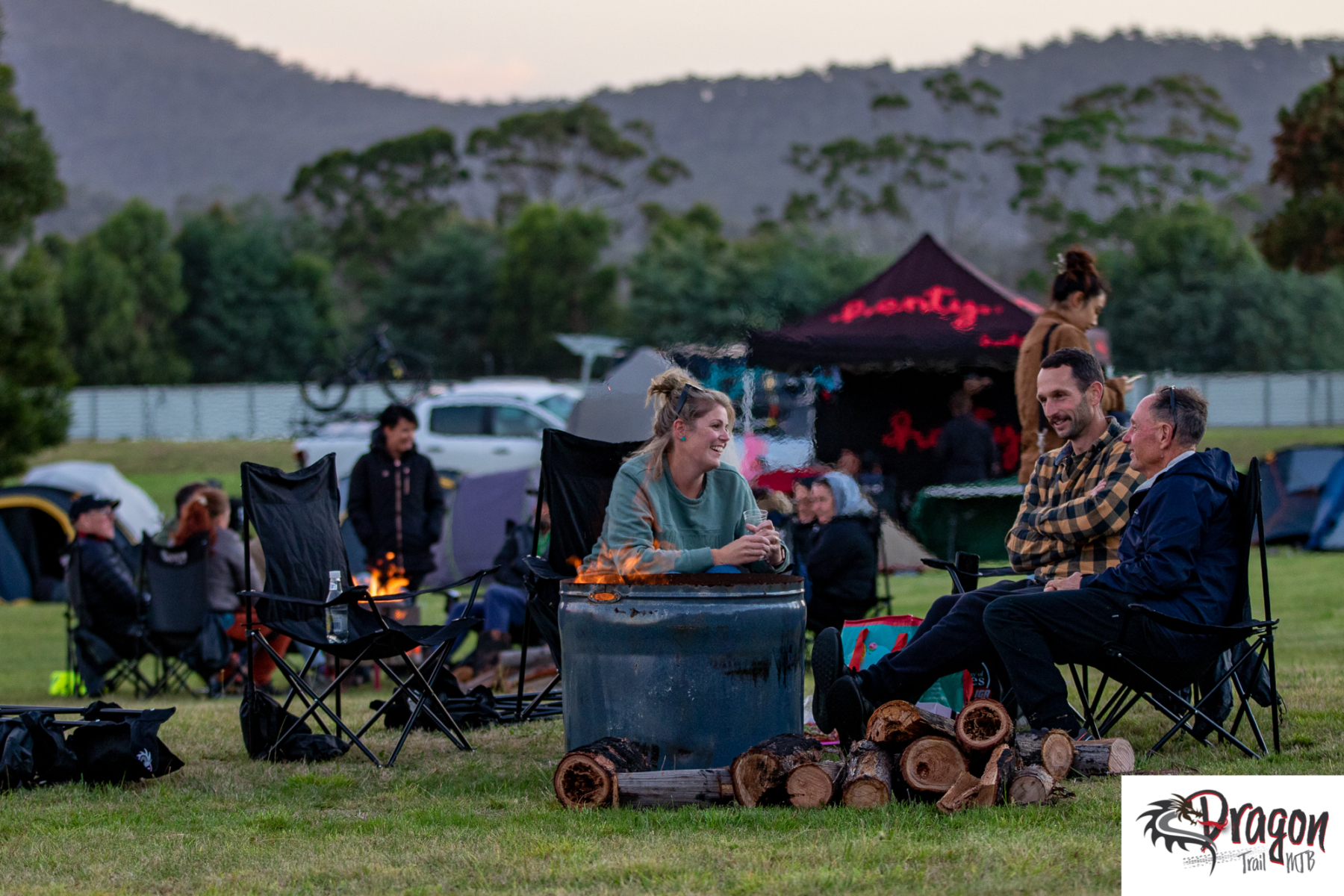
Wave starts are back
The singletrack to fire road/doubletrack/paved road ratio of the Dragon Trail Stage race skews significantly in favour of singletrack like no other event in Australia. Which is fantastic, until you need to pass someone, which gets tricky.
To alleviate traffic jams, the first-year riders were set off at 10-second intervals, effectively turning the entire race into an ITT. This caught a few folks off guard, and some felt it took away from the ‘racing’ aspect of the race.
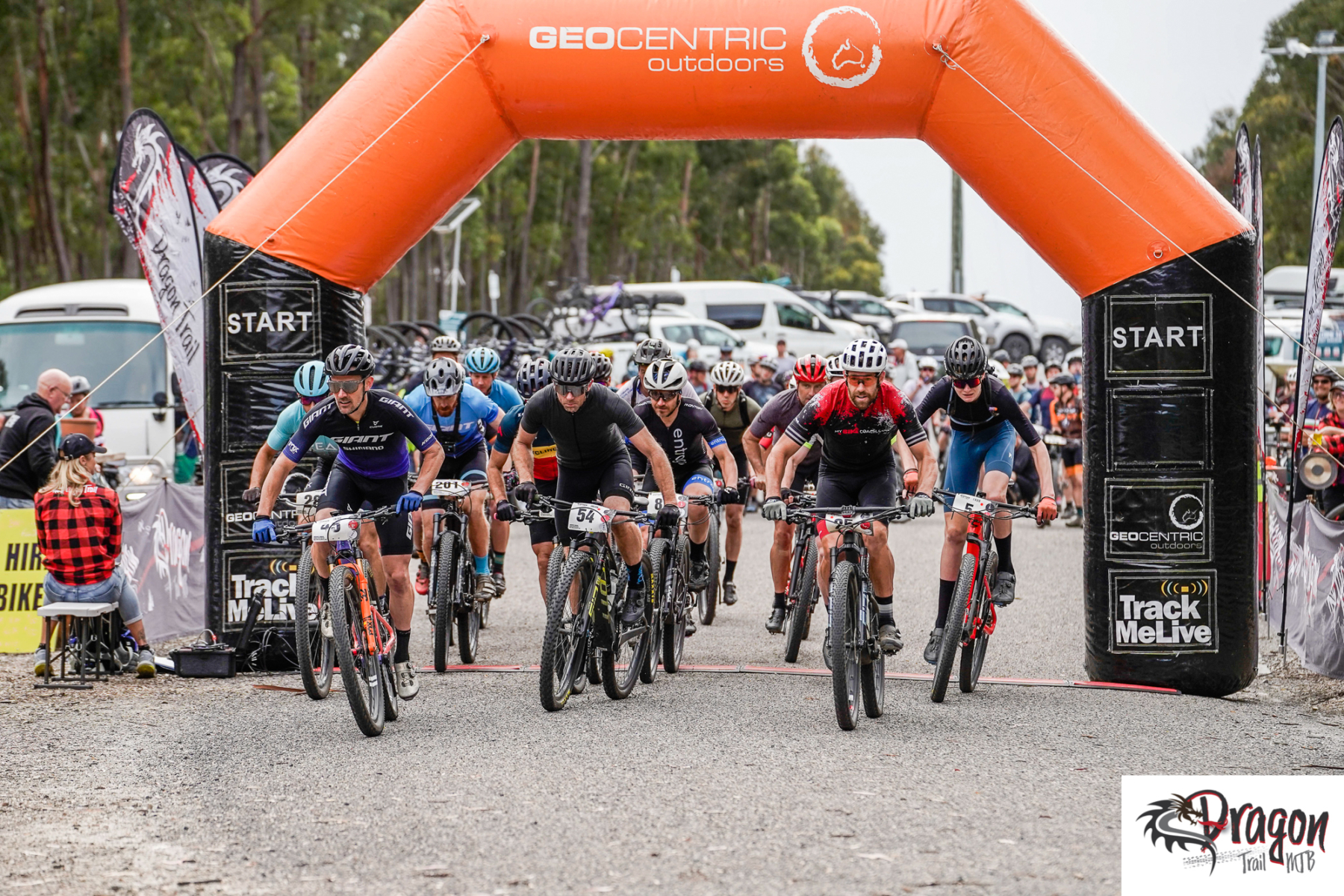
Last year they changed up the system, and by all accounts, it was well received by both the elites and the weekend warrior field.
“In Derby, because there is so much singletrack, we started everybody at five-second intervals — so they did the prologue and then started (the stage) five-seconds apart. Then for stage two and three, there’s a wave start of 20 people,” she says.
The eats and entertainment
The knock-on from the swap to two campsites in Branxholm and St Helens is that it also means there are more food options. Both towns have a grocery store and several places to eat, in addition to the food trucks Geocentric Outdoor at the race village.
“Now we’re less reliant on the food we put on. If you don’t like the food at the campsite, you can jump on your bike and find an amazing range of other food,” says Foulkes.
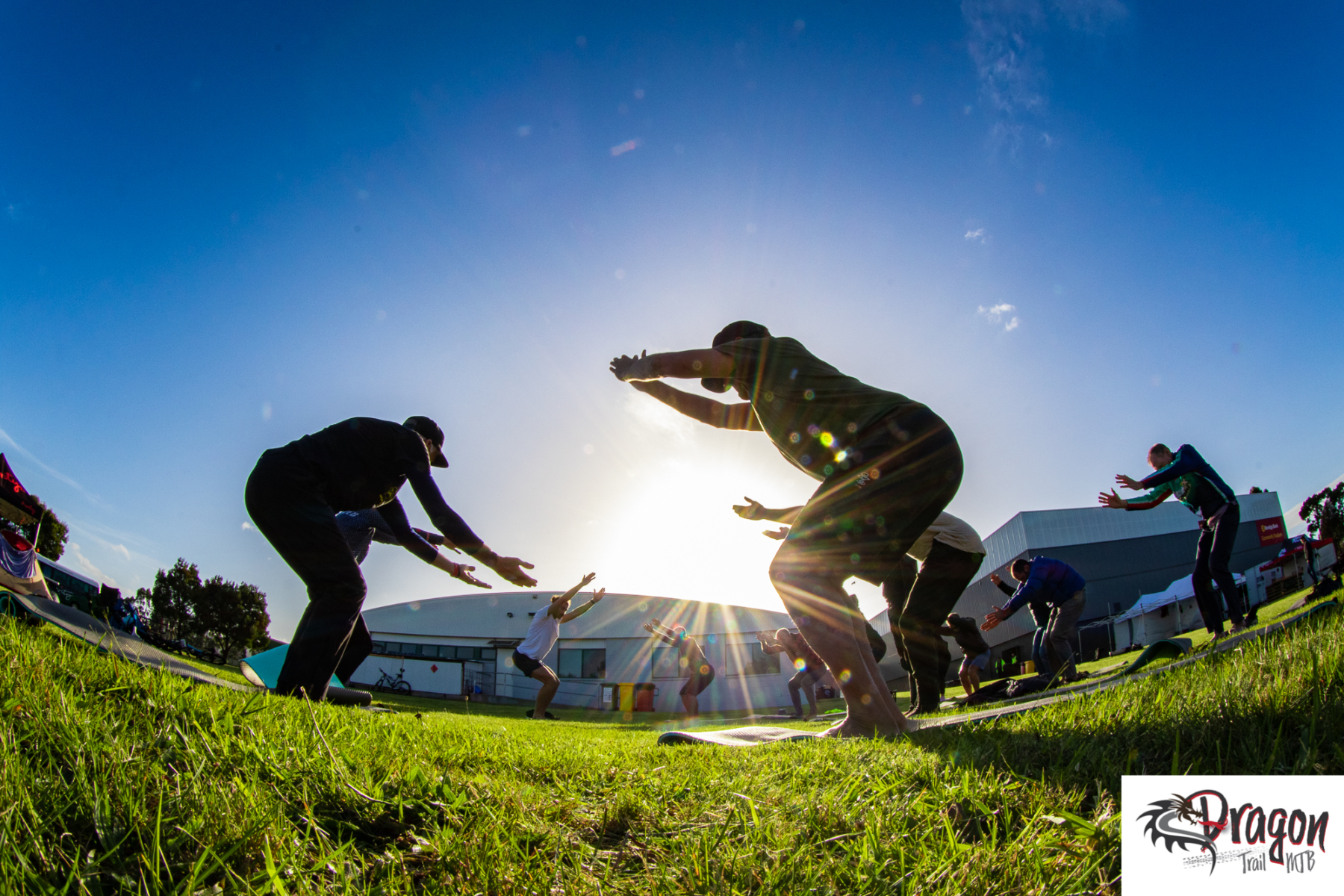
With so much of the field essentially staying in the camp, Geocentric Outdoor also puts on events and entertainment once the stage has ended and into the evening. From 4-9pm each day Foulkes tells us there will be a combination of bands and speakers to keep you entertained at the camp. There is also group activities like yoga to keep you busy and help to stay limber for the following day.
How do you get there?
According to Foulkes, most of the field is not from Tassie, and this year 10% of the riders are coming in from overseas.
“Because it is a holiday destination and it is harder to get to, we try to make it as easy as possible. It’s hard travelling with a bike, so we’ll meet you at the airport. Launceston is the primary one that has the most options (for flights and transfers), but we have a shuttle from Hobart as well,” says Foulkes.

How do you enter?
Entries for the 2023 Dragon Trail are open now through the Dragon Trail website. The entries are already streaming in, and Foulkes tells us the elite field is looking pretty strong this year, with Karen Hill and Jon Odams back to defend their titles. Sam Fox is also on the bill after his Euro racing campaign last year, as well as Scott Bowden — who raced on the Road and XC MTB at the Rio Olympics.

